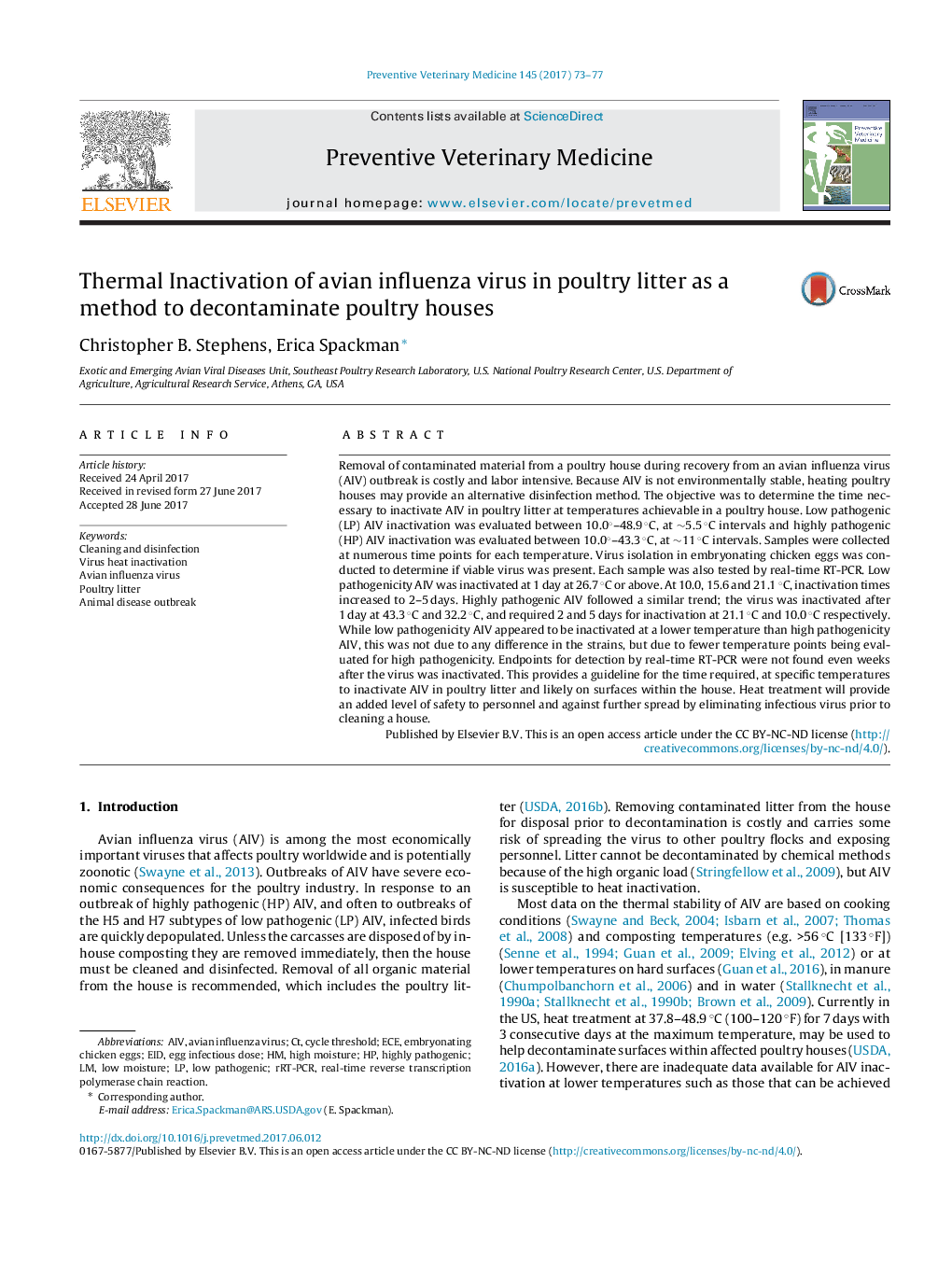| کد مقاله | کد نشریه | سال انتشار | مقاله انگلیسی | نسخه تمام متن |
|---|---|---|---|---|
| 5543550 | 1554145 | 2017 | 5 صفحه PDF | دانلود رایگان |
عنوان انگلیسی مقاله ISI
Thermal Inactivation of avian influenza virus in poultry litter as a method to decontaminate poultry houses
ترجمه فارسی عنوان
تعویق حرارتی ویروس آنفولانزای مرغی در بستر مرغ به عنوان یک روش برای تخریب خانه های مرغ
دانلود مقاله + سفارش ترجمه
دانلود مقاله ISI انگلیسی
رایگان برای ایرانیان
کلمات کلیدی
AIVEIDRRT-PCRhigh moistureECe - ECAcycle threshold - آستانه چرخهPoultry litter - بستر مرغHighly pathogenic - بسیار بیماریزا استCleaning and disinfection - تمیز کردن و ضد عفونی کردنLow moisture - رطوبت کمreal-time reverse transcription polymerase chain reaction - واکنش زنجیره پلیمراز رونویسی معکوس در زمان واقعیavian influenza virus - ویروس آنفولانزای مرغیLow pathogenic - کمبود بیماری
موضوعات مرتبط
علوم زیستی و بیوفناوری
علوم کشاورزی و بیولوژیک
علوم دامی و جانورشناسی
چکیده انگلیسی
Removal of contaminated material from a poultry house during recovery from an avian influenza virus (AIV) outbreak is costly and labor intensive. Because AIV is not environmentally stable, heating poultry houses may provide an alternative disinfection method. The objective was to determine the time necessary to inactivate AIV in poultry litter at temperatures achievable in a poultry house. Low pathogenic (LP) AIV inactivation was evaluated between 10.0°-48.9 °C, at â¼5.5 °C intervals and highly pathogenic (HP) AIV inactivation was evaluated between 10.0°-43.3 °C, at â¼11 °C intervals. Samples were collected at numerous time points for each temperature. Virus isolation in embryonating chicken eggs was conducted to determine if viable virus was present. Each sample was also tested by real-time RT-PCR. Low pathogenicity AIV was inactivated at 1 day at 26.7 °C or above. At 10.0, 15.6 and 21.1 °C, inactivation times increased to 2-5 days. Highly pathogenic AIV followed a similar trend; the virus was inactivated after 1 day at 43.3 °C and 32.2 °C, and required 2 and 5 days for inactivation at 21.1 °C and 10.0 °C respectively. While low pathogenicity AIV appeared to be inactivated at a lower temperature than high pathogenicity AIV, this was not due to any difference in the strains, but due to fewer temperature points being evaluated for high pathogenicity. Endpoints for detection by real-time RT-PCR were not found even weeks after the virus was inactivated. This provides a guideline for the time required, at specific temperatures to inactivate AIV in poultry litter and likely on surfaces within the house. Heat treatment will provide an added level of safety to personnel and against further spread by eliminating infectious virus prior to cleaning a house.
ناشر
Database: Elsevier - ScienceDirect (ساینس دایرکت)
Journal: Preventive Veterinary Medicine - Volume 145, 15 September 2017, Pages 73-77
Journal: Preventive Veterinary Medicine - Volume 145, 15 September 2017, Pages 73-77
نویسندگان
Christopher B. Stephens, Erica Spackman,
